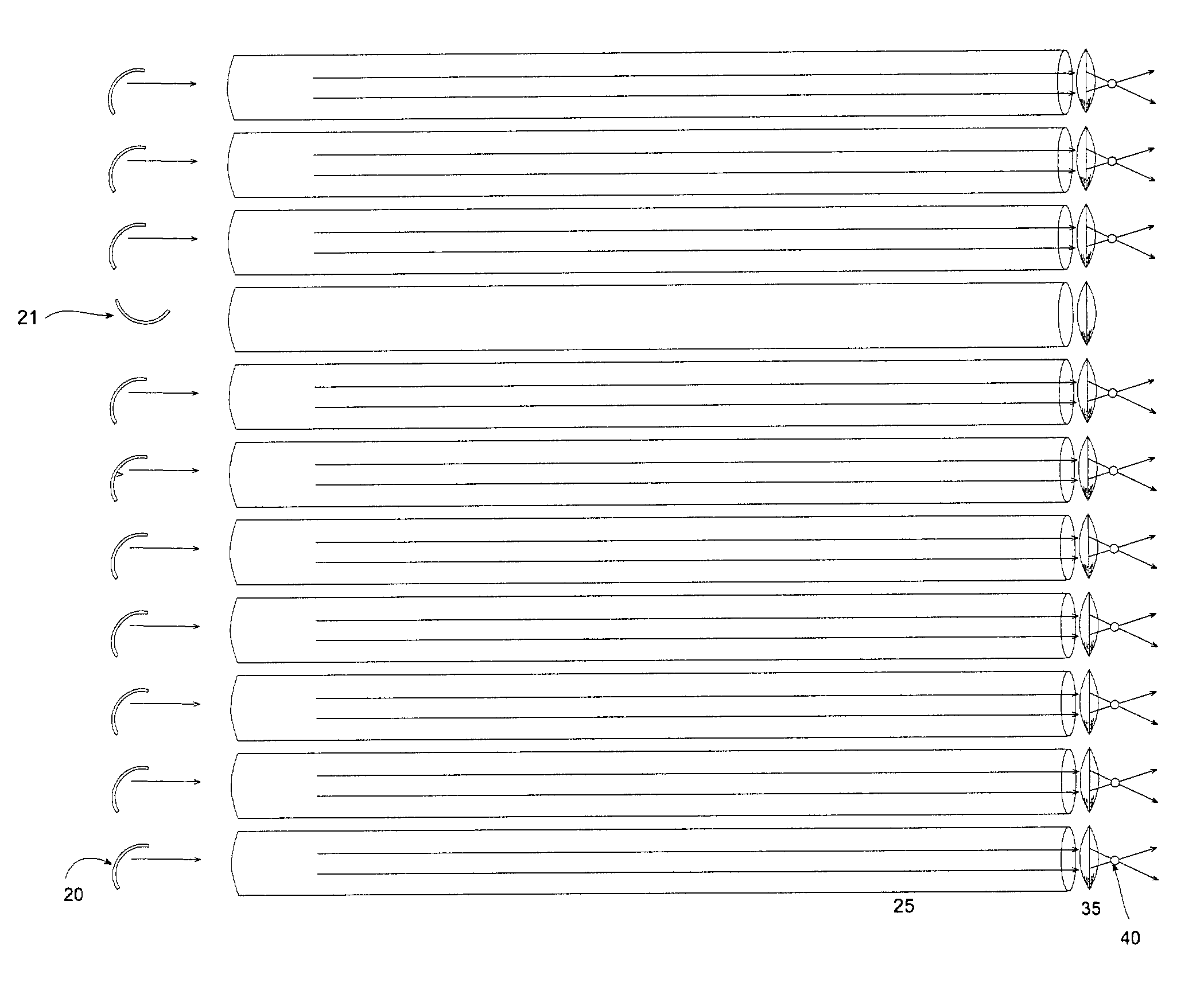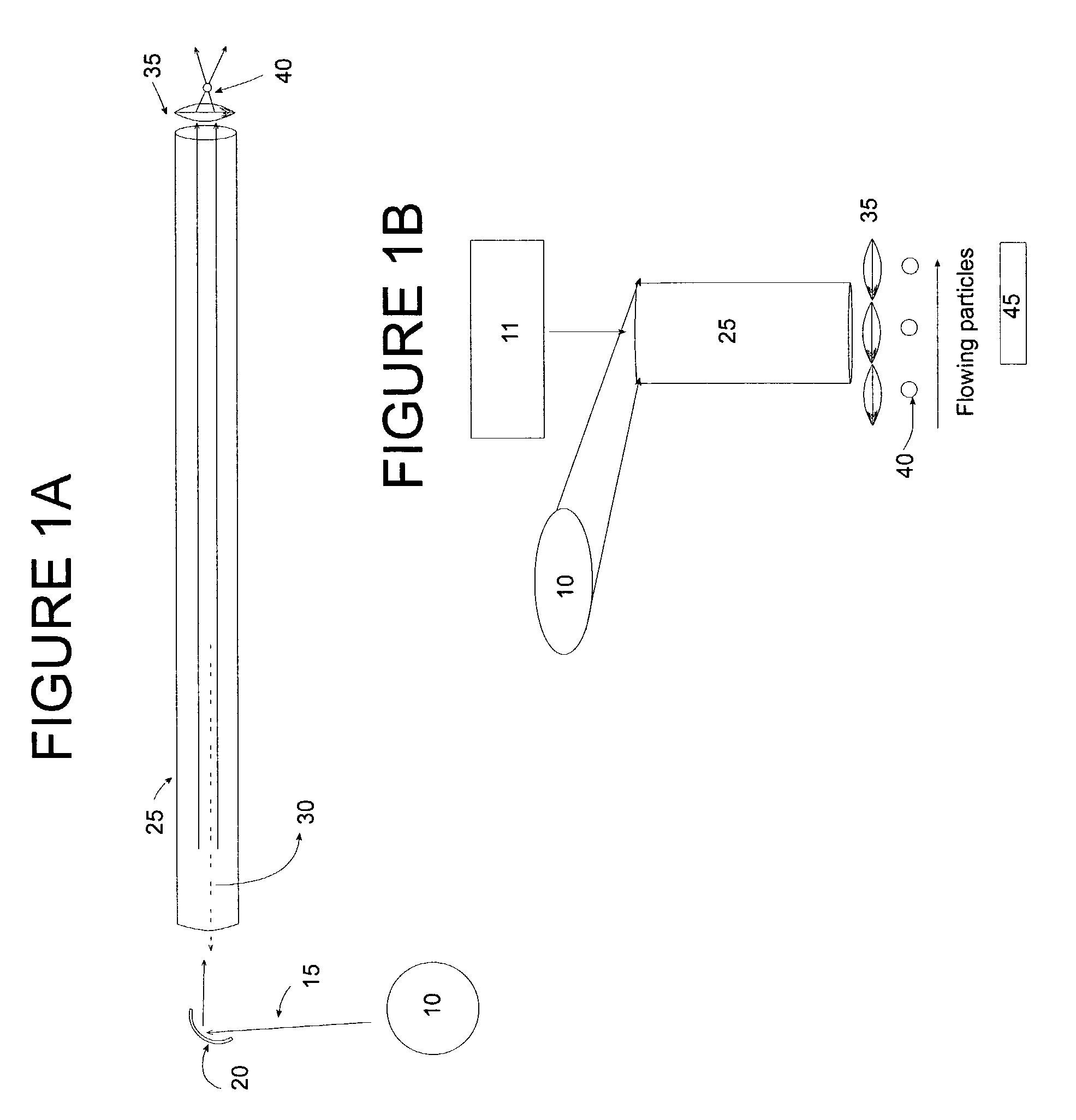Optical array device and methods of use thereof for screening, analysis and manipulation of particles
- Summary
- Abstract
- Description
- Claims
- Application Information
AI Technical Summary
Benefits of technology
Problems solved by technology
Method used
Image
Examples
example 1
[0114]The imaging fiber bundle and the trapping chamber were mounted on a modified Olympus IX-70 inverted microscope as shown in FIG. 10A. A microscope objective mount was placed in the place of the microscope condenser in order to focus, the laser beam into the imaging fiber bundle. For laser light focusing, LMPlan Olympus objectives 50×, (NA 0.50), 20×(NA 0.40), or 5×(NA 0.13) were used. The laser beam was directed from the laser output into the objective using standard optical components (Newport, Irvine, Calif.). Microparticle trapping was achieved by using 488 nm and 647 nm light from a continuous-wave Coherent Innova 70C Spectrum tunable laser or using 1060 nm Ytterbium laser light from an IR fiber laser model PYL-50M (IPG Photonics, Oxford, Mass.). The imaging fiber was held by a fiber holder connected to a micropositioner (Newport, Irvine, Calif.) that was connected to the microscope stage which allowed movement in the X, Y, and Z directions (FIG. 10). A Sony CCD-IRIS video ...
PUM
 Login to View More
Login to View More Abstract
Description
Claims
Application Information
 Login to View More
Login to View More - R&D
- Intellectual Property
- Life Sciences
- Materials
- Tech Scout
- Unparalleled Data Quality
- Higher Quality Content
- 60% Fewer Hallucinations
Browse by: Latest US Patents, China's latest patents, Technical Efficacy Thesaurus, Application Domain, Technology Topic, Popular Technical Reports.
© 2025 PatSnap. All rights reserved.Legal|Privacy policy|Modern Slavery Act Transparency Statement|Sitemap|About US| Contact US: help@patsnap.com



